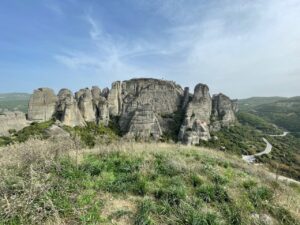Don French’s nearest rival has climbed only 11 peaks
Last month, Don French became the first person to complete New Zealand’s 100 Peak Challenge, 30 years after he began. French summited his final peak, 2,557m Mt Unicorn in the Southern Alps, after five previous failed attempts.
The unusual alpine tick list features a mixture of the easy, the extremely difficult, and the wildly remote. The former president of the New Zealand Alpine Club conceived the idea back in 1991 to encourage climbers of all levels to get off the beaten track. The club offered a prize to the climber who did the most peaks that initial year. French won that too, summiting seven.
Today, about 70 people are chasing the list. But considering that the next closest person behind French has climbed only 11 of the 100, his achievement won’t be duplicated for a while.
How the 100 Peaks obsession began
Sometimes, the biggest goals begin as casual conversations among friends. We saw that with Paul Caffyn‘s circumnavigation of Australia by kayak. The idea began as an offhand remark among the boys. Falling onto the fertile ground of a high achiever, it turned into an obsession.
French was the same. In 1992, he and two fellow climbers were waiting out bad weather in a mountain hut near the head of the Havelock River. A list of the 100 peaks hung on the wall.

The idea to climb all 100 peaks came about when French was weather-bound in a hut by the Havelock River, above.
“[We] entertained ourselves looking at the map [and figuring out] how you would climb them,” recalled French. “As a bit of a throwaway statement, I said ‘Oh, I’ll go and climb the lot’. So for the next 30 years, I’ve had to live up to my throwaway statement.”
The goal has not been without its challenges. First, he lives on the North Island, where only five of the 100 are located. The other 95 are on the South Island, so he couldn’t just pop off and nail one on a weekend. Also, “the mountains seem to have been getting a bit steeper and higher over the past few years,” the 62-year-old admits.

French’s final peak was the elusive Mt Unicorn, which he achieved on his sixth attempt last month.
His final peak, Mt Unicorn, at the Strauchon Glacier on the West Coast of the South Island, isn’t the highest on the 100 Peaks list. But “you’ve got 26 pitches of climbing, so it’s possibly the longest rock climb in the country,” French says.
French found that Mt Irene in the Murchison Mountains was the most difficult to plan for. He needed additional permits because the region mostly off-limits as the last bastion of the takehe, a native bird that was presumed extinct until its rediscovery in 1948.
His climb of Jagged in the Arrowsmith Range –- one of the most challenging alpine ice routes in the country — was the second ascent ever of the Deep Throat (5+) route on Jagged’s east face. The long, steep, committing line took 23 hours to complete during New Zealand’s harsh alpine winter.
French grew up on a farm in Masterton (New Zealand’s Greater Wellington area) and became used to long days in the elements. He realized early that academic prowess wasn’t his specialty. Nor was he destined to be an athletic hero.
But in his final year of high school, he climbed Mt Egmont (2,518m) in Taranaki and enjoyed the cross-over between the physical aspects of his farm upbringing and climbing resilience. He discovered that he was quite good at climbing and tackled some of the country’s most difficult peaks, years before the list was established.
Mt Tasman (3,498m) is the tallest on the list and is second only to 3,766m Mt Cook (which was too accessible to include on a list that emphasizes remoteness). Fiordland’s Mitre Peak (1,692m) is one of the most photographed but least climbed peaks in New Zealand, while Mt Talbot (2,110m) is recommended for beginners.
French, who previously participated in four Himalayan expeditions, is one of only a handful of people to have climbed all New Zealand peaks over 3,000m. Out of the 100, he completed 14 of the peaks solo.
An active member of the Wairarapa Search and Rescue team, he’s admits he’s been lucky over the years. Yet despite a few near-misses and a few injuries, he has no intention of hanging up his climbing boots soon.
There is “a hell of a lot of mountains out there”, he says. “What motivates me to climb is finding what’s around the corner. But I do wonder sometimes with my years, “Can I still do it?'”





